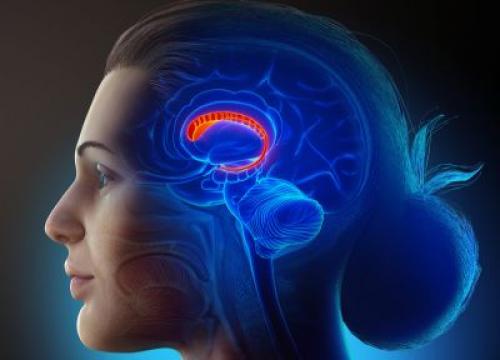Vertigo, Dizziness & Low Blood Pressure

Dizziness and vertigo are commonly reported symptoms in people with Parkinson’s disease (PD). Dizziness is a term used to describe a range of sensations, such as being on the verge of fainting, feeling woozy, weak or unsteady. Dizziness that creates the false sense that you or your surroundings are spinning or moving is called vertigo. All types of dizziness can lead to balance problems.
In general, both symptoms are less notable in people in the early stages of Parkinson’s. It is more common for older people with Parkinson’s to experience dizziness or vertigo. When tested, many people with PD experience vestibular dysfunction (balance issues related to the inner ear) even without having symptoms of vertigo or dizziness.
While these non-movement symptoms are common, they are often overlooked. To optimize your treatment, know how to identify vertigo and dizziness, so you can address the issue with your care team.
Causes
Orthostatic Hypotension (OH)
Postural low blood pressure, also called orthostatic hypotension (OH), is a drop in blood pressure that happens when you go from a seated position or lying down to standing. Certain medications (including those for high blood pressure), dehydration and conditions such as heart disease increase this risk.
When orthostatic hypotension is related to a neurologic disorder like Parkinson’s, it’s called neurogenic orthostatic hypotension (nOH). Damage caused by nervous system disorders, including Parkinson’s, can result in the nervous system not being able to make or release norepinephrine, a chemical that constricts blood vessels and raises blood pressure. This causes dizziness or lightheadedness.
Neurogenic orthostatic hypotension tends to be underdiagnosed. It is usually identified because people experience dizziness or lightheadedness when they stand up. Other nOH symptoms include:
-
Weakness
-
Difficulty thinking
-
Headache
-
Blurred or dimmed vision
In early Parkinson's, you might not notice dizziness, but experience foggy thinking or memory problems.
Managing nOH
If you become lightheaded upon standing, report it to your doctor. In general, ask your doctor to screen you for nOH once a year. This is done by taking your blood pressure while lying down and then standing. A drop of 20 points in the top number (systolic) or 10 points in the bottom number (diastolic) indicates nOH.
If you receive a diagnosis of nOH, talk to your doctor about reducing or eliminating certain medications (such as antihypertensives, medications that bring down blood pressure, and some dopaminergic medications, those that boost parts of the brain influenced by dopamine).
Medication-induced Dizziness or Vertigo
Other common drugs associated with dizziness or vertigo (a spinning sensation) include anticonvulsants, antihypertensives, antibiotics, antidepressants, antipsychotics, pain medications and anti-inflammatory drugs.
With the help of your doctor, this medication-related issue can be treated by weaning the dosage and slowly discontinuing the drug or drugs causing the side effect.
Deep Brain Stimulation
A surgical procedure for PD, deep brain simulation (DBS) can be associated with dizziness or vertigo. Either symptom can emerge soon after surgery. A health professional can determine if the dizziness is caused by the device by simply powering it on and off. Once the device is turned off, your care partner or medical team should observe you to confirm if the dizziness or vertigo resolves.
If it does resolve, your healthcare team may reprogram the device and possibly check the location of the electrodes (usually by brain imaging). When turning the device on and off is not enough, an evaluation by an ENT specialist may be necessary.
Benign Paroxysmal Positional Vertigo (BPPV)
This is a sudden onset of vertigo, lasting only a few seconds, typically after a sudden head movement such as turning in bed. Research reveals BPPV may occur in 11% of people with Parkinson's who experience dizziness and becomes more common with age. It can be diagnosed using an in-office assessment called the Dix-Hallpike maneuver. Your doctor, or a physical therapist who is an expert in vestibular rehabilitation can offer treatment options or teach you the Semont maneuvers, a series of simple movements to self-administer at home.
Transient Ischemic Attack or Stroke
Sudden onset of dizziness, usually in the presence of other sudden onset neurological symptoms, could possibly be a transient ischemic attack “TIA” (a brief stroke-like attack) or stroke. If a stroke is suspected, you should seek emergency medical attention immediately and undergo appropriate imaging and potentially stroke-related therapies.
Other Causes
Dizziness and vertigo are not unique to Parkinson’s and can have many other causes. Symptoms can be caused by anxiety, cold, flu, dehydration, heart conditions, migraine, among others. Tell your doctor if you regularly experience dizziness or vertigo.
Orthostatic Hypotension Treatments
When experiencing lightheadedness due to OH, these treatments can help:
- Stay hydrated (drinking 6-8 glasses of water a day)
- Wear compression stockings and abdominal binders
- Elevate the head of your bed during sleep
- Move the legs before standing — this can pump blood into the body, potentially lessening symptoms
- Avoid getting up too quickly, especially when first getting out of bed, when you have been seated for a long period, or when getting up from the commode
- Increase salt in your diet
- Eat smaller meals if lightheadedness is worse after a large meal
- Work with your doctor to adjust medications that worsen OH
- Consider prescription medications, such as Florinef, Midodrine, Droxidopa, Mestinon or salt tabs that can raise blood pressure
Page reviewed by Dr. Addie Patterson, Movement Disorders Neurologist at the Norman Fixel Institute for Neurological Diseases at the University of Florida, a Parkinson’s Foundation Center of Excellence.


